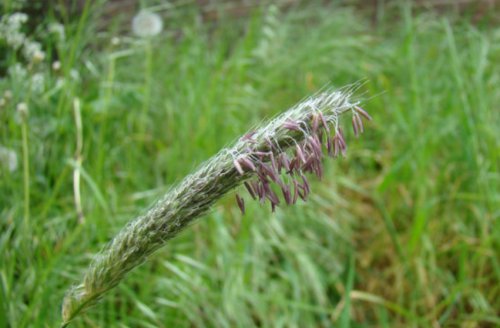The flowering of hay fever-causing trees such as Birch and Ash does not flower, but Oak, Beech and Coniferous trees, which release slightly allergenic pollen, do flower. Elms, mainly planted as street trees in Amsterdam, have now reached the fruiting stage and you can see the coin-shaped fruits whirling out of the trees like a kind of spring snow. These fruits are not allergenic and therefore do not cause any complaints.
Dandelions are also fading and that gives beautiful fluffballs. These fluff with a seed attached to it, just like the fruits of elms, do not cause allergic reactions. The fact that these are often wrongly associated with hay fever is therefore nonsense, but at the same time as the release of the Dandelion fluff there is a lot of grass pollen in the air: These grass pollen grains are the cause of hay fever-like complaints during this period.
Nice, dry and somewhat windy weather causes the pollen to spread in the air, only persistent precipitation washes the air clean. Low precipitation has little effect and during dry periods, even between showers, the release of pollen continues. In addition, with the first precipitation, air comes down, which contains pollen and thus greatly increases the concentration at ground level and especially at nose level.
Wilted Willows and Poplars form seeds with hairy crests. These can also be carried by the wind and this hairy seed is called 'summer snow'. Much of this fluff is released into the air in the second part of spring and the first part of summer. It is not allergenic and does not cause hay fever-like symptoms.
A number of herbs that are already flowering also release pollen into the air. These are Ribwort Plantain, Sorrel and later in the season Common Nettle.
source: Flora van Nederland

